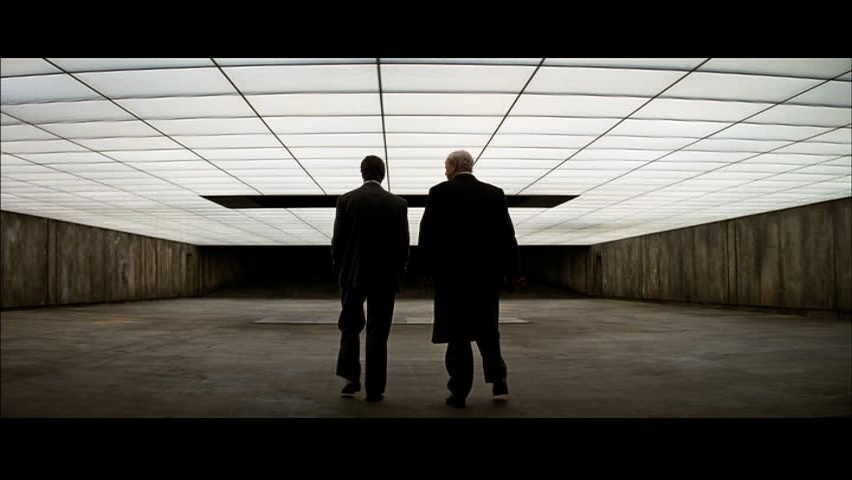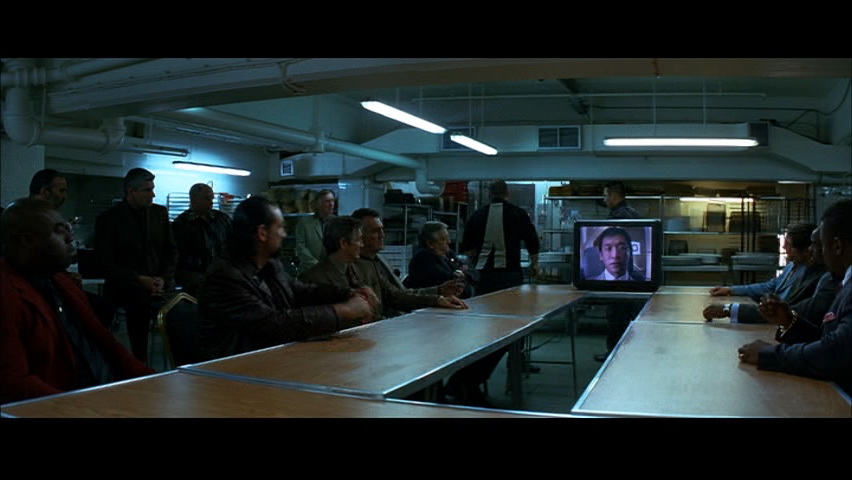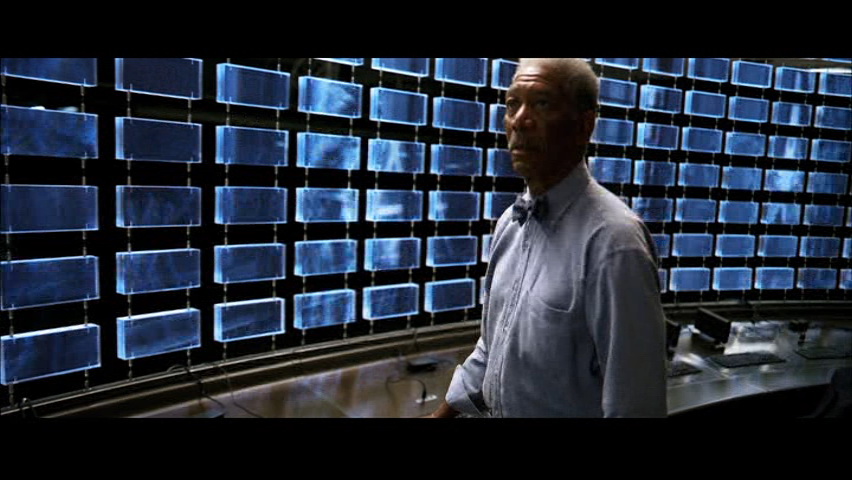Part 2
The Dark Knight (2008)
The architecture of Christopher Nolan's The Dark Knight (2008) is unstable: the majority of sets are partially constructed or repurposed buildings, often in a state of disrepair or decay. The sets are predominantly poorly lit, challenging the ability of the audience to comprehend the totality or order of the space. Contrasting this disorder and instability are a few bright, clean, well-ordered spaces that offer the audience a respite from the chaos.
The setting of the Major Crimes Unit is makeshift: a holding cell is set up in what appears to be a former office or warehouse space. Bare fluorescent lights dangle above folding tables which are used as desks and the interrogation room looks like it could have formerly been a storage space. The set implies that the institution charged with maintaining order in the city is lacking in authority. This is the basic premise of the Batman mythology - a city bound by the limits of law is unable to maintain order so an outlaw, a vigilante who can cross the line set for the protection of the privacy of its citizens, must rebalance the social order.
Appropriately then, it is the space of Bruce Wayne/Batman which is bright, clean, and ordered - perhaps excessively so, in the same way Batman is an excessive force of order and authority. The only other exceptionally new and ordered architecture in the film is the the corporate headquarters of criminal accountant Lau, which is in the style of contemporary commercial skyscrapers - a tower of steel and glass. Lau's building is interesting in the contradiction between its apparent transparency and the formidable security which makes it a very private space. The director appears to be making a comment on the dual nature of a corporation as an institution with a public face but intensely private interests.
Bruce Wayne/Batman's most egregious violation of the privacy of the citizens of Gotham occurs when he creates a machine which can survey the entire city by tapping into everyone's cellphone and allowing him to see and hear what is happening in private spaces. The existence of the machine nearly costs him the support of one of his greatest allies, Lucius Fox, because of Fox's concerns about balance between restoring authority and maintaining privacy - essentially a concern that violations of personal privacy could lead to an authoritarian regime which would be no better, that is to say, no more balanced, than the current chaos. Of all of the films studied for this paper, The Dark Knight (2008) offers the most enlightened view of authority and balance between social order and privacy.
 |
 |
 |
The (temporary) Bat-Cave |
The Criminals Boardroom |
Batman as Big Brother |